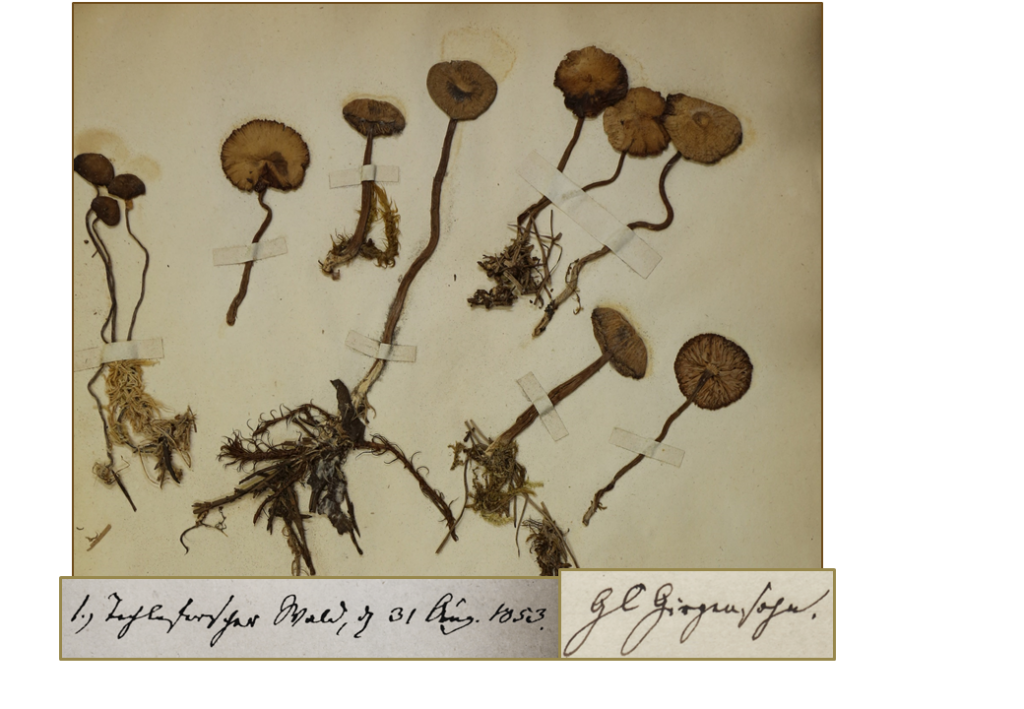The oldest preserved fungal specimens were collected in the middle of 19th century by early Baltic German natural scientists, supported by the society Die Dorpater Naturforscher-Gesellschaft (now the Estonian Naturalist’s Society).
Gustav Carl Girgensohn (1786–1872), a pedagogue and an amateur bryologist, collected the oldest samples known from Balticum in years 1844–1859.

Girgensohn’s collection consist from 56 paper sheets where fungi were adhered to thin paper strips – 109 specimens, including labels of locations and dates. According to revision these fungi represented 37 taxa of fungi and 7 myxomycetes.
Girgensohn’s fungi mainly originate from the vicinity of Tartu, in addition from Southern Estonia and Latvia – from the valleys of Rivers Daugava and Gauja – then the area in the Livonian Governorate, Russian Empire.
In the left is example of agarics collected 31. VIII 1853 by Tähtvere manor.
Heinrich August Dietrich (1820–1897) was a gardener, amateur botanist and the founder of Estonian mycology. He published a two-volume monograph (Blicke in die Cryptogamenwelt der Ostseeprovinzen 1856 – I, 1859 – II) dealing with over 1,000 fungal and fungal-like taxa, the first cryptogamic research of this kind for the Baltic region. The included taxa have only short descriptions but the vouchers have been preserved, collected from Estonian Governorate, Russian Empire, from the vicinity of Haimre and elsewhere from Rapla, Harju and Lääne Counties, and from the vicinity of Tallinn.

Between 1852 and 1857, H. A. Dietrich issued nine volumes of exciccatae named Centuria Plantarum Florae Balticae cryptogamarum. Each contains ca 100 specimens, more than 800 preserved specimens in total. Only the 3rd volume is unpreserved according to the recent study. About half of the specimens were growing on leaves of native plants or cultivars.